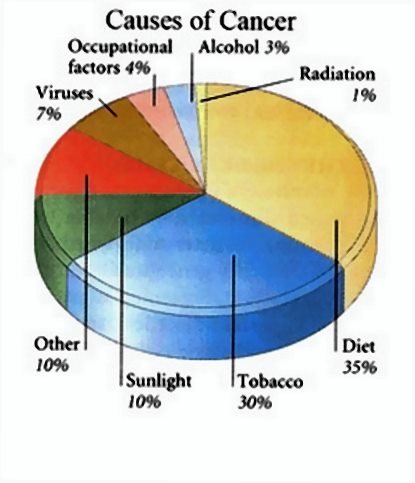Seniors and Cancer – 5 Risk Factors of Cancer
Recently I saw on Facebook where one of my friends had posted on their page, that they may have accepted an online marriage proposal. I commented something along the lines of, “That’s different.” I then received a message from them letting me know I had fallen for a hoax and this joke and others like it were all to raise awareness for breast cancer during the month of October. I was then told that because I had made a comment, I too would have to choose from six or eight equally unrelated thought provokers and post it to raise awareness.
Not to demean, denigrate or belittle the work of the Komen Foundation, but cancer is deadly serious and, to me, not a laughing matter. Yes, I believe we can laugh at the hand we’ve been dealt, sometimes that’s all we can do, and pray. But then we need to dig in and fight like hell. Like many of you, I have lost friends to cancer. I also have several who are currently undergoing radiation or chemotherapy. Did I forget to mention that my older brother died from melanoma? Many of you by now probably think I should get a grip and laugh some more, but I am unable to find anything amusing in raising awareness with unrelated (or misdirected) humor (Should my friend read this, I hope there is ample room for grace and forgiveness). Correspondence with them has led me to do this series on cancer, hopefully raising awareness of and how seniors are affected. First, though, let’s learn about the causes.
As you would guess, the literature on cancer is vast. There’s a lot to sort through and digest. My goal is only to hit the highlights and make you aware of some of the causes. My initial research found that cancer is caused by carcinogens. The simple definition of a carcinogen is, “a substance capable of causing cancer in living tissue.” Going into a deep and thorough study of carcinogens is beyond the scope of any brief article like this. According to the Mayo Clinic, prolonged exposure can cause “the development of abnormal cells that divide uncontrollably and have the ability to infiltrate and destroy normal body tissue.” The American Cancer Society has listed over 450 substances than are known to be carcinogenic. That’s a lot! Their report, though, does stress that “carcinogens do not cause cancer at all times, under all circumstances. In other words, a carcinogen does not always cause cancer in every person, every time there is any kind of exposure.” If nothing else, we must all be aware of the risks.
I’m guessing that no one reading this is going to rush out and tape a complete list of all the substances that can cause cancer on their refrigerator. That would be a lot of unnecessary work. Best to know what the risk factors are and adjust accordingly.
- Age – The Dana-Farber Cancer Institute, citing a report from the National Cancer Institute, states “risk increases significantly after age 50, and half of all cancers occur at age 66 and above … one-quarter of new cancer diagnoses are in people aged 65 to 74.”
- Family History – Citing documented research, The American Cancer Society stated “Sometimes, people in the same family get cancer because they share behaviors that raise their risk. Not because they share genes … In other cases, cancer can be caused by an abnormal gene that is passed down through generations. In those cases, what is inherited is not the cancer itself, but the abnormal gene that may – or may not – lead to cancer.”
diet and exercise
- Lifestyle Choices – The CDC is one of many institutions citing studies that show smoking, excessive alcohol consumption, obesity, poor eating habits, and other choices can all contribute to cancer.
- Exposure – The National Cancer Institute cites studies linking exposure to tobacco, sunlight and workplace chemicals as possibly causing cancer. You may not smoke, but exposure, at home, to second-hand smoke can be a cause.
- Diet and Exercise – The number one thing anyone can do toward preventing cancer, says the American Cancer Society, is to daily engage in some form of moderate exercise and eat healthy foods.
Cancer can strike young and old alike, but because it takes time for cancer cells to develop and people are living longer, it is no surprise that, according to the CDC, “more than two-thirds of all new cancers are diagnosed among adults aged 60 years and older. The risk of cancer increases with age and this will affect how health care costs are allocated and what treatments are undertaken, especially since many older adults tend to have more than one medical issue.
I guess you could say that living longer is a double-edged sword. Yes, people are living longer, but it also means we have more time to be susceptible to disease, especially cancer. I can’t say that someone who never smokes, eats healthy and exercises regularly will never develop cancer. Not at all. I do believe, though, that we can all, young and old, be proactive in minimizing our risks. I hope you join me next week when I share some actions, we can all take to prevent cancer.


Recent Comments